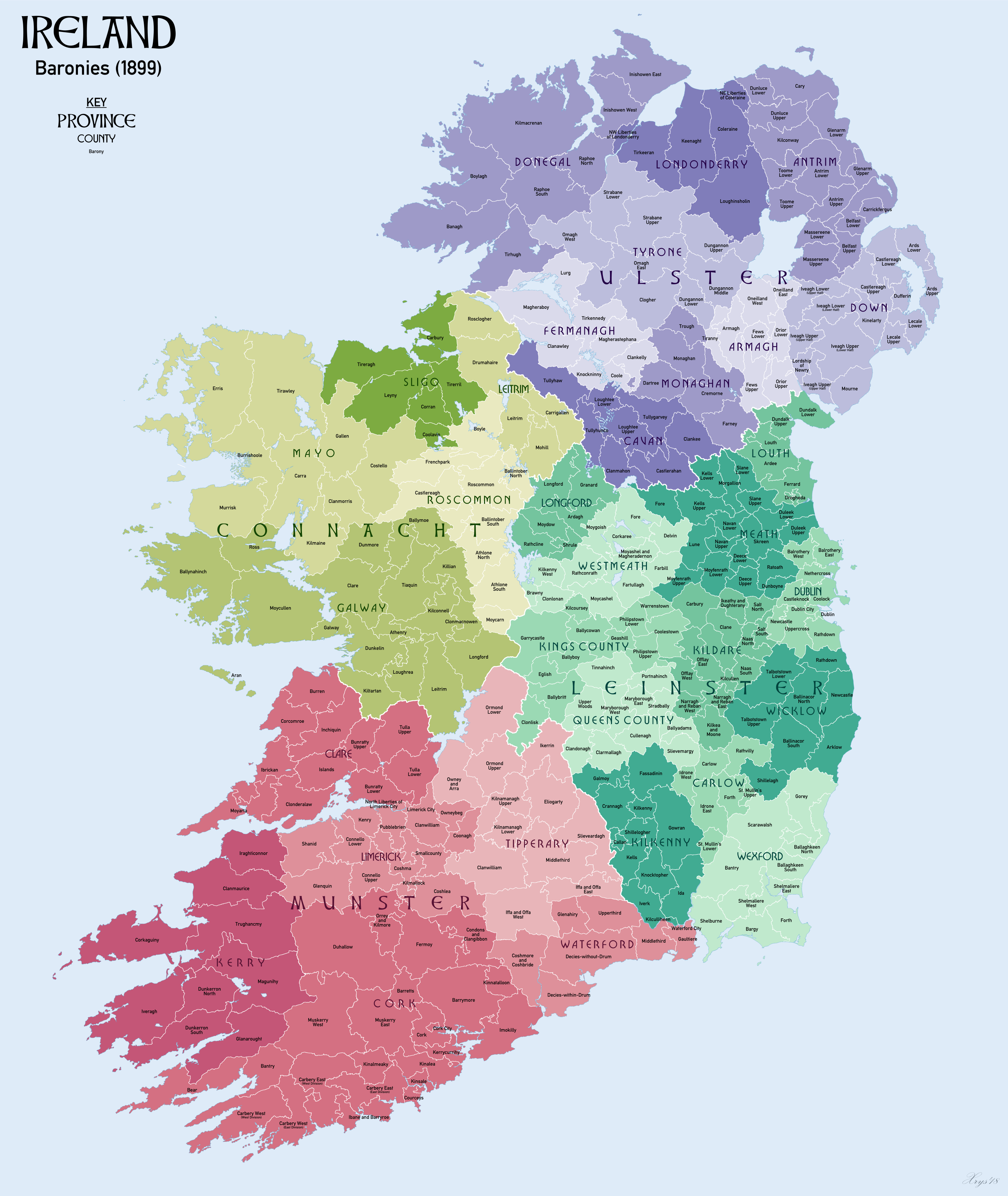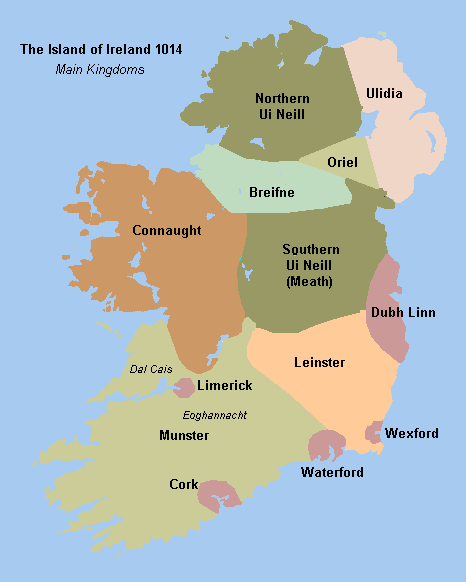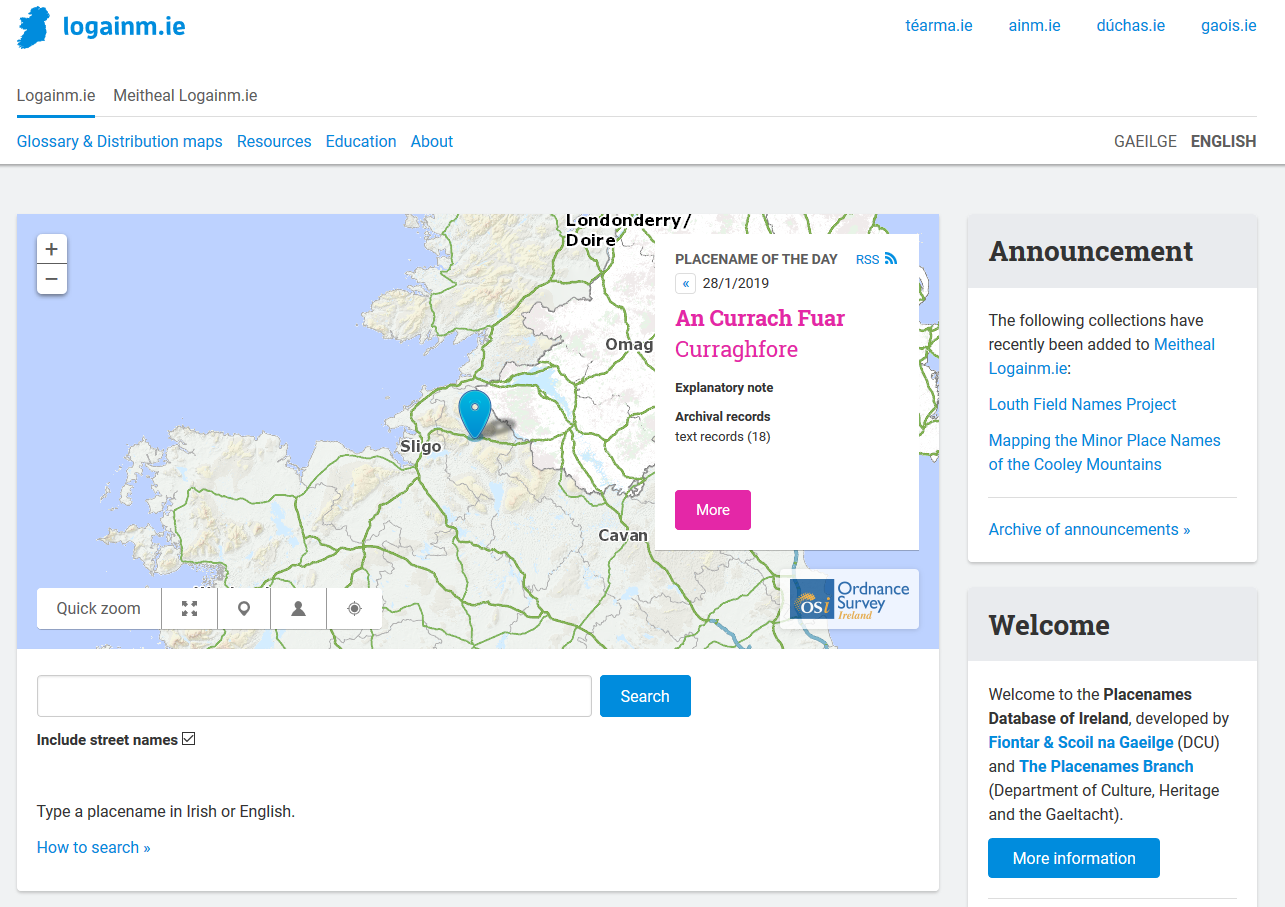|
Leyney
Leyny (), also Leyney, is a barony in County Sligo, Ireland. It corresponds to the ancient túath of Luíghne. Leyny consists of these civil parishes: Achonry, Ballysadare Ballysadare (), locally also Ballisodare, is a town in County Sligo, Ireland. It is about south of Sligo town. The town developed on an important crossing of the Owenmore River. Ballysadare is in a townland and civil parish of the same name. ..., Kilvarnet, Killoran and Kilmacteige. References Baronies of County Sligo {{Sligo-geo-stub ... [...More Info...] [...Related Items...] OR: [Wikipedia] [Google] [Baidu] |
Luighne Connacht
Luighne Connacht was a territory located in north-central Connacht, on the borders of what is now County Mayo and County Sligo, Ireland. The Tuatha of Luighne was co-extensive with the modern day boundary of the Roman Catholic Diocese of Achonry Origin The Luighne, the "tribe of Lugh" were a people, originally found in Brega, south of Kells in what is now County Meath.The baronies of Lune in Meath, and Leyney in Sligo, were called after them. According to Lambert McKenna (pp.xvi-xvii): ''" heyprobably acquired their land in Connacht as a reward for military service rendered to the tribes which had victoriously invaded that part of the country. Their migration ... and their settlement in Connacht are constantly referred to in the poems of this book" (see The Book of O'Hara) "and are the chief subject of the story of the Battle of Crionna; it evidently remained a very lively tradition among them even down to late times."'' According to this story, the Luighne accompanied ... [...More Info...] [...Related Items...] OR: [Wikipedia] [Google] [Baidu] |
Achonry
Achonry (; ) is a village in County Sligo, Ireland. The old name is Achad Cain Conairi. St. Nath Í ua hEadhra (O'Hara) founded a monastery here. The foundation gave the later diocese its name. The monastery was founded on land granted by the Clan Conaire. Nath Í was the teacher of St. Féichín of Ballysadare. The village is in a townland and civil parish of the same name. The diocese was co-extensive with the barony of Leyney (Luighne). In the parish is the former Church of Ireland Cathedral of St Crumnathy, now deconsecrated. The title, Bishop of Achonry, takes its name from the village, and has been used by bishoprics in both the Roman Catholic Church and Church of Ireland The Church of Ireland (, ; , ) is a Christian church in Ireland, and an autonomy, autonomous province of the Anglican Communion. It is organised on an all-Ireland basis and is the Christianity in Ireland, second-largest Christian church on the .... See also * List of towns and villages in Ir ... [...More Info...] [...Related Items...] OR: [Wikipedia] [Google] [Baidu] |
Barony (Ireland)
In Ireland, a barony (, plural ) is a historical subdivision of a counties of Ireland, county, analogous to the hundred (county subdivision), hundreds into which the counties of England were divided. Baronies were created during the Tudor reconquest of Ireland, replacing the earlier cantreds formed after the original Norman invasion of Ireland, Norman invasion.Mac Cotter 2005, pp.327–330 Some early baronies were later subdivided into half baronies with the same standing as full baronies. Baronies were mainly cadastre, cadastral rather than administrative units. They acquired modest local taxation and spending functions in the 19th century before being superseded by the Local Government (Ireland) Act 1898. Subsequent adjustments of county boundaries mean that some baronies now straddle two counties. The final catalogue of baronies numbered 331, with an average area of ; each county was divided, on average, into 10 or 11 baronies. Creation The island of Ireland was "shired" i ... [...More Info...] [...Related Items...] OR: [Wikipedia] [Google] [Baidu] |
List Of Sovereign States
The following is a list providing an overview of sovereign states around the world with information on their status and recognition of their sovereignty. The 205 listed states can be divided into three categories based on membership within the United Nations System: 193 member states of the United Nations, UN member states, two United Nations General Assembly observers#Current non-member observers, UN General Assembly non-member observer states, and ten other states. The ''sovereignty dispute'' column indicates states having undisputed sovereignty (188 states, of which there are 187 UN member states and one UN General Assembly non-member observer state), states having disputed sovereignty (15 states, of which there are six UN member states, one UN General Assembly non-member observer state, and eight de facto states), and states having a political status of the Cook Islands and Niue, special political status (two states, both in associated state, free association with New ... [...More Info...] [...Related Items...] OR: [Wikipedia] [Google] [Baidu] |
Provinces Of Ireland
There are four provinces of Ireland: Connacht, Leinster, Munster and Ulster. The Irish language, Irish word for this territorial division, , meaning "fifth part", suggests that there were once five, and at times Kingdom of Meath, Meath has been considered to be the fifth province. In the medieval period, however, there were often more than five. The number of provinces and their delimitation fluctuated until 1610, when they were permanently set by the English administration of James VI and I, James I. The provinces of Ireland no longer serve administrative or political purposes but function as historical and cultural entities. Etymology In modern Irish language, Irish, the word for province is (pl. ). The modern Irish term derives from the Old Irish (pl. ) which literally meant "a fifth". This term appears in 8th-century law texts such as and in the legendary tales of the Ulster Cycle where it refers to the five kingdoms of the "Pentarchy". MacNeill enumerates the five earl ... [...More Info...] [...Related Items...] OR: [Wikipedia] [Google] [Baidu] |
Connacht
Connacht or Connaught ( ; or ), is the smallest of the four provinces of Ireland, situated in the west of Ireland. Until the ninth century it consisted of several independent major Gaelic kingdoms (Uí Fiachrach, Uí Briúin, Uí Maine, Conmhaícne, and Delbhna). Between the reigns of Conchobar mac Taidg Mór (died 882) and his descendant, Aedh mac Ruaidri Ó Conchobair (reigned 1228–33), it became a kingdom under the rule of the Uí Briúin Aí dynasty, whose ruling sept adopted the surname Ua Conchobair. At its greatest extent, it incorporated the often independent Kingdom of Breifne, as well as vassalage from the lordships of western Mide and west Leinster. Two of its greatest kings, Tairrdelbach Ua Conchobair (1088–1156) and his son Ruaidri Ua Conchobair (c. 1115–1198) greatly expanded the kingdom's dominance, so much so that both became High King of Ireland. The Kingdom of Connacht collapsed in the 1230s because of civil war within the royal dynasty, which enab ... [...More Info...] [...Related Items...] OR: [Wikipedia] [Google] [Baidu] |
Counties Of Ireland
The counties of Ireland (Irish language, Irish: ) are historic administrative divisions of the island. They began as Normans in Ireland, Norman structures, and as the powers exercised by the Cambro-Norman barons and the Old English (Ireland), Old English nobility waned over time, new offices of political control came to be established at a county level. The number of counties varied depending on the time period, however thirty-two is the traditionally accepted and used number. Upon the partition of Ireland in 1921, six of the traditional counties became part of Northern Ireland. In Northern Ireland, Counties of Northern Ireland, counties ceased to be used for local government in 1973; Local government in Northern Ireland, districts are instead used. In the Republic of Ireland, some counties have been split resulting in the creation of new counties: there are currently 26 counties, 3 cities and 2 cities and counties that demarcate areas of local government in the Republic of Ire ... [...More Info...] [...Related Items...] OR: [Wikipedia] [Google] [Baidu] |
County Sligo
County Sligo ( , ) is a Counties of Ireland, county in Republic of Ireland, Ireland. It is in the Northern and Western Region and is part of the Provinces of Ireland, province of Connacht. Sligo is the administrative capital and largest town in the county. Sligo County Council is the Local government in the Republic of Ireland, local authority for the county. The population of the county was 70,198 at the 2022 census of Ireland, 2022 census. It is noted for Benbulben Mountain, one of Ireland's most distinctive natural landmarks. History The county was officially formed in 1585 by Sir Henry Sidney, Lord Deputy of Ireland, but did not come into effect until the chaos of the Nine Years' War (Ireland), Nine Years' War ended, in 1603. Its boundaries reflect the Ó Conchobhair Sligigh confederation of Lower Connacht () as it was at the time of the Elizabethan conquest. This confederation consisted of the tuatha, or territories, of Cairbre Drom Cliabh, Cairbre Drumcliabh, Tír Fhíacr ... [...More Info...] [...Related Items...] OR: [Wikipedia] [Google] [Baidu] |
Placenames Database Of Ireland
The Placenames Database of Ireland (), also known as , is a database and archive of place names in Ireland. It was created by Fiontar, Dublin City University in collaboration with the Placenames Branch of the Department of Tourism, Culture, Arts, Gaeltacht, Sport and Media. The website is a public resource primarily aimed at journalists and translators, students and teachers, historians and researchers in genealogy. Placenames Commission and Placenames Branch The Placenames Commission () was established by the Department of Finance in 1946 to advise Ordnance Survey Ireland and the government of what the Irish name of places should be. Although both the 1922 Constitution of the Irish Free State and the current constitution adopted in 1937 recognised Irish as the national language, the law in regard to placenames was carried over from the 19th-century UK statutes which established the Ordnance Survey and Griffith's Valuation, under which only an English-language name had offi ... [...More Info...] [...Related Items...] OR: [Wikipedia] [Google] [Baidu] |
Túath
''Túath'' (plural ''túatha'') is the Old Irish term for the basic political and jurisdictional unit of Gaelic Ireland. ''Túath'' can refer to both a geographical territory as well the people who lived in that territory. The smallest ''túath'' controlled by a king was about the size of a later Irish barony (about 177sq miles) and kings with greater power would have two or more ''túatha'' under their control, according to ''A Smaller Social History of Ancient Ireland.'' '' Social structure In ancient Irish terms, a household was reckoned at about 30 people per dwelling. A ''trícha cét'' ("thirty hundreds"), was an area comprising 100 dwellings or, roughly, 3,000 people. A ''túath'' consisted of a number of allied ''trícha céta'', and therefore referred to no fewer than 6,000 people. Probably a more accurate number for a ''túath'' would be no fewer than 9,000 people. Each ''túath'' was a self-contained unit, with its own executive, assembly, courts system and defence ... [...More Info...] [...Related Items...] OR: [Wikipedia] [Google] [Baidu] |
Irish Archaeological Society
The Irish Archaeological Society (sometimes spelled as "Irish Archæological Society") was a learned society, founded in 1840. Among the founders were the scholar John O'Donovan and the Rev. Dr. Todd, who acted as secretary. The Irish Archaeological Society was one of the first text publication societies of Ireland. It published scholarly material on the history of Ireland from 1841 to 1855.. The publications appeared from 1840 to 1851, and in 1855. See: with 15 volumes online readable. In 1854 it merged with the Celtic Society, to form the Irish Archaeological and Celtic Society. Publications In 1841 the first publication of the Irish Archaeological Society appeared: * ''Tracts Relating to Ireland, printed for the Irish Archæological Society.'' Vol. I. Dublin. It contained: ** Minutes of the First Annual General Meeting of the Society. ** ''The Circuit of Ireland by Muircheabtach Mac Neill'', by Cormacan Eigeas (A.D. 942). Translation and Notes by John O'Donovan. ** ''A ... [...More Info...] [...Related Items...] OR: [Wikipedia] [Google] [Baidu] |
Civil Parishes In Ireland
Civil parishes () are units of territory in the island of Ireland that have their origins in old Gaelic territorial divisions. They were adopted by the Anglo-Norman Lordship of Ireland and then by the Elizabethan Kingdom of Ireland, and were formalised as land divisions at the time of the Plantations of Ireland. They no longer correspond to the boundaries of Roman Catholic or Church of Ireland parishes, which are generally larger. Their use as administrative units was gradually replaced by Poor_law_union#Ireland, Poor Law Divisions in the 19th century, although they were not formally abolished. Today they are still sometimes used for legal purposes, such as to locate property in deeds of property registered between 1833 and 1946. Origins The Irish parish was based on the Gaelic territorial unit called a ''túath'' or ''Trícha cét''. Following the Norman invasion of Ireland, the Anglo-Normans, Anglo-Norman barons retained the ''tuath'', later renamed a parish or manor, as a un ... [...More Info...] [...Related Items...] OR: [Wikipedia] [Google] [Baidu] |





